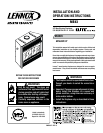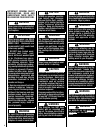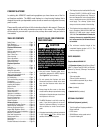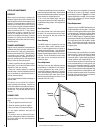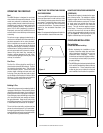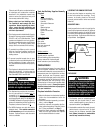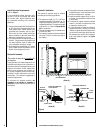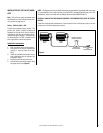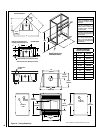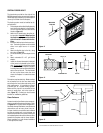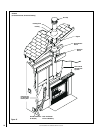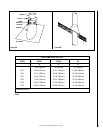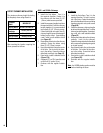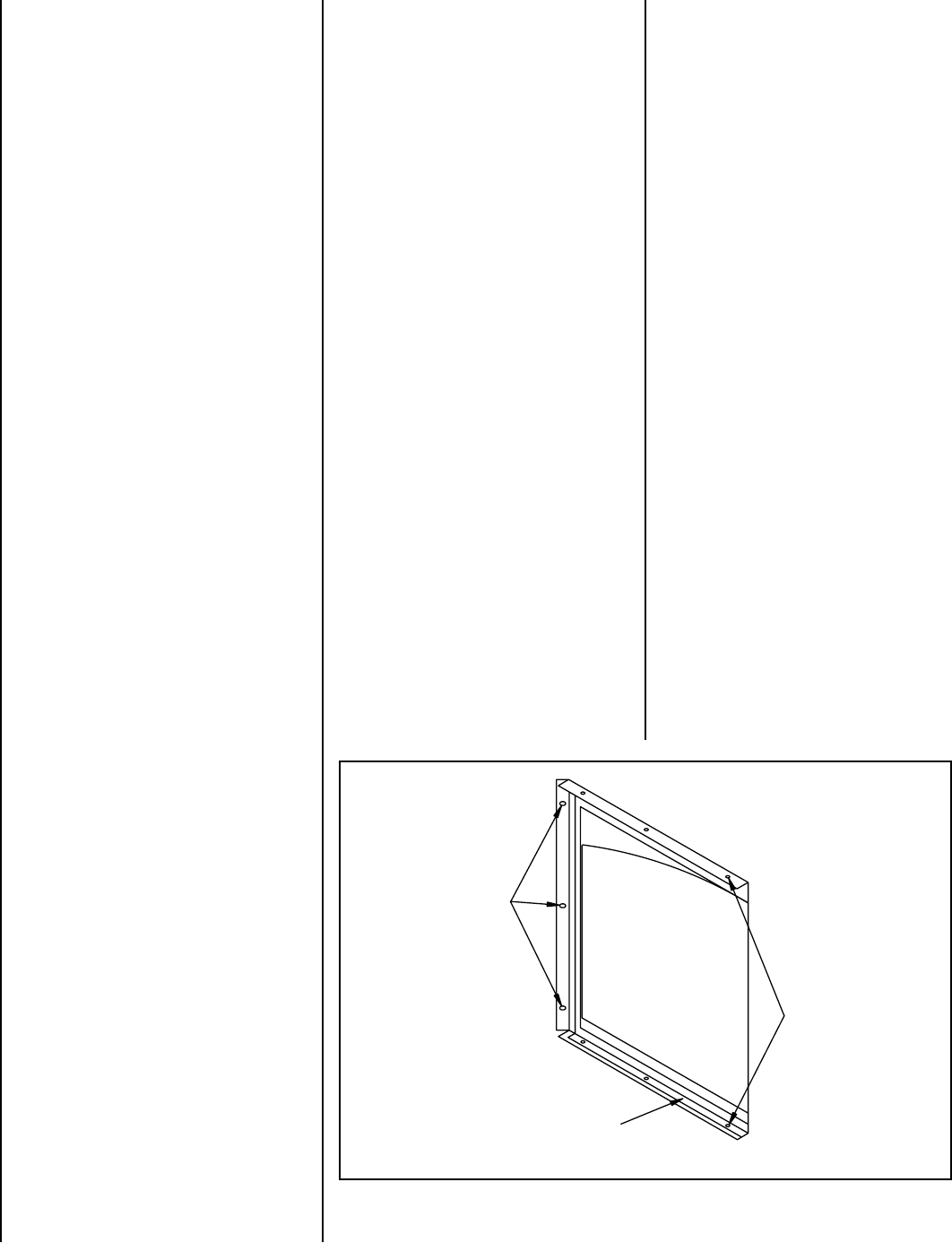
NOTE: DIAGRAMS & ILLUSTRATIONS ARE NOT TO SCALE.
4
FIREPLACE MAINTENANCE
CREOSOTE
When wood is burned slowly, it produces tar
and other organic vapors which combine with
expelled moisture to form a black deposit called
creosote. The creosote vapors condense in the
relatively cool chimney flue of a slow burning
fire. As a result, creosote residue accumulates
on the flue lining. When ignited, this creosote
makes an extremely hot fire. If the creosote
accumulation is large, a creosote fire in the
chimney can damage the chimney and over-
heat the surrounding wood framing. Creosote
formation in a chimney can be minimized by
making small hot fires rather than slow burning,
smouldering fires.
CHIMNEY MAINTENANCE
Regular chimney inspection and maintenance
combined with proper operation will help pre-
vent chimney fires. Keep your chimney clean.
Do not allow more than a 1/16" (1.6mm) build-up
of creosote in your chimney. The amount of
creosote will depend on variables such as fre-
quency of use and type of fire. We recommend
that you follow the instructions below:
1. Initially, inspect the chimney system weekly.
By doing this, you will learn how often it will be
necessary to clean your chimney.
2. Have your chimney cleaned by a qualified
chimney sweep. Chimney maintenance should
only be conducted by a qualified technical or
chimney sweep company.
3. Do not expect chemical cleaners to keep your
chimney clean.
The raincap can be removed for inspection
and/or cleaning of the chimney. Unscrew the
braces which attach the raincap to the chimney.
Using gloves, firmly grip the upper portion of
the rain cap. Turn the cap and lift it off the
chimney.
CHIMNEY FIRES
If you are having a chimney fire, follow these
steps:
1. Close the glass doors and the air inlet.
2. Close the chimney outside air register.
3. Alert your family of the possible danger.
4. If you require assistance, alert your fire
department.
5. If possible, use a dry chemical fire extin-
guisher, baking soda or sand to control the fire.
Do not use water as it may cause dangerous
steam explosions.
6. Watch for smouldering or fire on combustibles
next to the fireplace and chimney. Check outside
to ensure that sparks and hot embers coming out
of the chimney are not igniting the roof.
7. Do not use the fireplace again until your
chimney and fireplace have been inspected by
a qualified chimney sweep or a fire department
inspector.
Door Frame Care
Use a glass cleaner and a soft cloth to polish
the frame. Do not use abrasives such as steel
wool or steel pads for they may scratch the
door frame finish.
Glass Cleaning
The ME43 fireplace is designed to keep the
glass clean under normal operating condi-
tions. To clean the glass there are a number of
specially designed cleaners. Your authorized
LHP Dealer can recommend a suitable cleaner.
Regular household glass cleaners will not clean
creosote. Do not use abrasives such as steel
pads, steel wool or oven cleaner as they will
scratch the glass.
Doors Adjustment
Glass doors may lose their adjustment during
transportation or installation of the fireplace.
A wrong adjustment may cause a loss in
combustion’s efficiency and control. The glass
doors must be parallel, at the same height and
must almost touch each other when closed.
Maximum spacing between the doors is one
sixteenth of an inch (1/16’’).
Figure 1
The glass doors can be adjusted by loosening
the three (3) screws of the hinges’ supports
(see fastening screws in Figure 1). If a minor
angular adjustment is needed, you may loosen
only two (2) of the three (3) screws using the
other as a pivot point.
Glass Replacement
The glass used for the ME43 fireplace doors is
a high temperature ceramic glass. If the glass
breaks, it must be replaced with a ceramic glass
such as Neoceram. Tempered or ordinary glass
will not withstand the high temperatures of
the ELITE ME43 fireplace. Replacement glass
should be purchased from your local LHP dealer.
Do not operate the unit with cracked or broken
glass. To remove the glass panel, unscrew the
frame screws, remove the interior frame and
the glass panel.
Removal Of Ashes
Remove ashes only when the fire is out and the
ashes are cold. Lift the front of the log grate
until it rests against the rear refractory; then
remove the ashes. Ashes should be placed in
a metal container with a tight-fitting lid. The
closed container of ashes should be placed on
a non-combustible floor or on the ground, well
away from all combustible materials, pending
final disposal. If the ashes are disposed of by
burial in soil or otherwise locally dispersed, they
should be retained in the closed container until
all cinders have thoroughly cooled. Do not leave
the ashes in the house as they give off carbon
monoxide and other toxic gases.
Fastening
Screws
Interior Frame
Frame
Screws



